#tactics
Photo


2022 - A group of activists use parkour to turn off useless energy wasting shop signs in Montpellier, France. [video]
#france#parkour#environmentalism#gif#2022#energy#anti-consumerism#solarpunk#direct action#anti-capitalism#capitalist hell#ads#advertisement#tactics#montpellier
67K notes
·
View notes
Text
"Efficiency" left the Big Three vulnerable to smart UAW tactics

Tomorrow (September 22), I'm (virtually) presenting at the DIG Festival in Modena, Italy. Tomorrow night, I'll be in person at LA's Book Soup for the launch of Justin C Key's "The World Wasn’t Ready for You." On September 27, I'll be at Chevalier's Books in Los Angeles with Brian Merchant for a joint launch for my new book The Internet Con and his new book, Blood in the Machine.

It's been 143 days since the WGA went on strike against the Hollywood studios. While early tactical leaks from the studios had studio execs chortling and twirling their mustaches about writers caving once they started losing their homes, the strikers aren't wavering – they're still out there, pounding the picket lines, every weekday:
https://www.cnbc.com/2023/08/09/how-hollywood-writers-make-ends-meet-100-days-into-the-writers-guild-strike.html
The studios obviously need writers. That gleeful, anonymous studio exec who got such an obvious erotic charge at the thought of workers being rendered homeless as punishment for challenging his corporate power completely misread the room, and his comments didn't demoralize the writers. Instead, they inspired the actors to go on strike, too.
But how have the writers stayed out since May Day? How have the actors stayed out for 69 days since their strike started on Bastille Day? We can thank the studios for that! As it turns out, the studios have devoted so much energy to rendering creative workers as precarious as possible, hiring as little as they can getting away with and using punishing overtime as a substitute for adequate staffing that they've eliminated all the workers who can't survive on side-hustles and savings for six or seven months at a time.
But even for those layoff-hardened workers, long strikes are brutal, and of course, all the affiliated trades, from costumers to grips, are feeling the pain. The strike fund only goes so far, and non-striking, affected workers don't even get that. That's why I've been donating regularly to the Entertainment Community Fund, which helps all affected workers out with cash transfers (I just gave them another $500):
https://secure2.convio.net/afa/site/Donation2?df_id=8117&8117.donation=form1&mfc_pref=T
As hot labor summer is revealed as a turning point – not just a season – long strikes will become the norm. Bosses still don't believe in worker power, and until they get their minds right, they're going to keep on trying to starve their workforces back inside. To get a sense of how long workers will have to hold out, just consider the Warrior Met strike, where Alabama coal-miners stayed out for 23 months:
https://www.thenation.com/article/activism/warrior-met-strike-union/
As Kim Kelly explained to Adam Conover in the latest Factually podcast, the Alabama coal strikers didn't get anywhere near the attention that the Hollywood strikers have enjoyed:
https://www.youtube.com/watch?v=UvyMHf7Yg0Q
(To learn more about the untold story of worker organizing, from prison unions to the key role that people of color and women played in labor history, check out Kelly's book, "Fight Like Hell," now in paperback:)
https://www.simonandschuster.com/books/Fight-Like-Hell/Kim-Kelly/9781982171063
Which brings me to the UAW strike. This is an historic strike, the first time that the UAW has struck all of the Big Three automakers at once. Past autoworkers' strikes have marked turning points for all American workers. The 1945/46 GM strike established employers' duty to cover worker pensions, health care, and cost of living allowances. The GM strike created the American middle-class:
https://prospect.org/labor/2023-09-18-uaw-strikes-built-american-middle-class/
The Big Three are fighting for all the marbles here. They are refusing to allow unions to organize EV factories. Given that no more internal combustion cars will be in production in just a few short years, that's tantamount to eliminating auto unions altogether. The automakers are flush with cash, including billions in public subsidies from multiple bailouts, along with billions more from greedflation price-gouging. A long siege is inevitable, as the decimillionaires running these companies earn their pay by starving out their workers:
https://www.businessinsider.com/general-motors-ceo-mary-barra-salary-auto-workers-strike-uaw-2023-9
The UAW knows this, of course, and their new leadership – helmed by the union's radical president Shawn Fain – has a plan. UAW workers are engaged in tactical striking, shutting down key parts of the supply chain on a rolling basis, making the 90-day strike fund stretch much farther:
https://prospect.org/blogs-and-newsletters/tap/2023-09-18-labors-militant-creativity/
In this project, they are greatly aided by Big Car's own relentless pursuit of profit. The automakers – like every monopolized, financialized sector – have stripped all the buffers and slack out of their operations. Inventory on hand is kept to a bare minimum. Inputs are sourced from the cheapest bidder, and they're brought to the factory by the lowest-cost option. Resiliency – spare parts, backup machinery – is forever at war with profits, and profits have won and won and won, leaving auto production in a brittle, and easily shattered state.
This is especially true for staffing. Automakers are violently allergic to hiring workers, because new workers get benefits and workplace protection. Instead, the car companies routinely offer "voluntary" overtime to their existing workforce. By refusing this overtime, workers can kneecap production, without striking.
Enter "Eight and Skate," a campaign among UAW workers to clock out after their eight hour shift. As Keith Brower Brown writes for Labor Notes, the UAW organizers are telling workers that "It’s crossing an unofficial picket line to work overtime. It’s helping out the company":
https://labornotes.org/2023/09/work-extra-during-strike-auto-workers-say-eight-and-skate
Eight and Skate has already started to work; the Buffalo Ford plant can no longer run its normal weekend shifts because workers are refusing to put in voluntary overtime. Of course, bosses will strike back: the next step will be forced overtime, which will lead to the unsafe conditions that unionized workers are contractually obliged to call paid work-stoppages over, shutting down operations without touching the strike fund.
What's more, car bosses can't just halt safety stoppages or change the rules on overtime; per the UAW's last contract, bosses are required to bargain on changes to overtime rules:
https://uaw.org/wp-content/uploads/2023/09/Working-Without-Contract-FAQ-FINAL-2.pdf
Car bosses have become lazily dependent on overtime. At GM's "highly profitable" SUV factory in Arlington, TX, normal production runs a six-days, 24 hours per day. Workers typically work five eight-hour days and nine hours on Saturdays. That's been the status quo for 11 years, but when bosses circulated the usual overtime signup sheet last week, every worker wrote "a big fat NO" next to their names.
Writing for The American Prospect, David Dayen points out that this overtime addiction puts a new complexion on the much-hyped workerpocalypse that EVs will supposedly bring about. EVs are much simpler to build than conventional cars, the argument goes, so a US transition to EVs will throw many autoworkers out of work:
https://prospect.org/labor/2023-09-20-big-threes-labor-shortages-uaw/
But the reality is that most autoworkers are doing one and a half jobs already. Reducing the "workforce" by a third could leave all these workers with their existing jobs, and the 40-hour workweek that their forebears fought for at GM inn 1945/46. Add to that the additional workers needed to make batteries, build and maintain charging infrastructure, and so on, and there's no reason to think that EVs will weaken autoworker power.
And as Dayen points out, this overtime addiction isn't limited to cars. It's also endemic to the entertainment industry, where writers' "mini rooms" and other forms of chronic understaffing are used to keep workforces at a skeleton crew, even when the overtime costs more than hiring new workers.
Bosses call themselves job creators, but they have a relentless drive to destroy jobs. If there's one thing bosses hate, it's paying workers – hence all the hype about AI and automation. The stories about looming AI-driven mass unemployment are fairy tales, but they're tailor made for financiers who get alarming, life-threatening priapism at the though of firing us all and replacing us with shell-scripts:
https://pluralistic.net/2023/03/09/autocomplete-worshippers/#the-real-ai-was-the-corporations-that-we-fought-along-the-way
This is why Republican "workerism" rings so hollow. Trump's GOP talks a big game about protecting "workers" (by which they mean anglo men) from immigrants and "woke captialism," but they have nothing to say about protecting workers from bosses and bankers who see every dime a worker gets as misappropriated from their dividend.
Unsurprisingly, conservative message-discipline sucks. As Luke Savage writes in Jacobin, for every mealymouthed Josh Hawley mouthing talking points that "support workers" by blaming China and Joe Biden for the Big Three's greed, there's a Tim Scott, saying the quiet part aloud:
https://jacobin.com/2023/09/republicans-uaw-strike-hawley-trump-scott/
Quoth Senator Scott: "I think Ronald Reagan gave us a great example when federal employees decided they were going to strike. He said, you strike, you’re fired. Simple concept to me. To the extent that we can use that once again, absolutely":
https://twitter.com/American_Bridge/status/1704136706574741988
The GOP's workerism is a tissue-thin fake. They can never and will never support real worker power. That creates an opportunity for Biden and Democrats to seize:
https://pluralistic.net/2023/09/18/co-determination/#now-make-me-do-it
Reversing two generations of anti-worker politics is a marathon, not a sprint. The strikes are going to run for months, even years. Every worker will be called upon to support their striking siblings, every day. We can do it. Solidarity now. Solidarity forever.



If you'd like an essay-formatted version of this post to read or share, here's a link to it on pluralistic.net, my surveillance-free, ad-free, tracker-free blog:
https://pluralistic.net/2023/09/21/eight-and-skate/#strike-to-rule
4K notes
·
View notes
Text
Classic Vietnam War Booby traps
466 notes
·
View notes
Text
Much of the public discussion of Ukraine reveals a tendency to patronize that country and others that escaped Russian rule. As Toomas Ilves, a former president of Estonia, acidly observed, “When I was at university in the mid-1970s, no one referred to Germany as ‘the former Third Reich.’ And yet today, more than 30 years after the fall of the Berlin Wall, we keep on being referred to as ‘former Soviet bloc countries.’” Tropes about Ukrainian corruption abound, not without reason—but one may also legitimately ask why so many members of Congress enter the House or Senate with modest means and leave as multimillionaires, or why the children of U.S. presidents make fortunes off foreign countries, or, for that matter, why building in New York City is so infernally expensive.
The latest, richest example of Western condescension came in a report by German military intelligence that complains that although the Ukrainians are good students in their training courses, they are not following Western doctrine and, worse, are promoting officers on the basis of combat experience rather than theoretical knowledge. Similar, if less cutting, views have leaked out of the Pentagon.
Criticism by the German military of any country’s combat performance may be taken with a grain of salt. After all, the Bundeswehr has not seen serious combat in nearly eight decades. In Afghanistan, Germany was notorious for having considerably fewer than 10 percent of its thousands of in-country troops outside the wire of its forward operating bases at any time. One might further observe that when, long ago, the German army did fight wars, it, too, tended to promote experienced and successful combat leaders, as wartime armies usually do.
American complaints about the pace of Ukraine’s counteroffensive and its failure to achieve rapid breakthroughs are similarly misplaced. The Ukrainians indeed received a diverse array of tanks and armored vehicles, but they have far less mine-clearing equipment than they need. They tried doing it our way—attempting to pierce dense Russian defenses and break out into open territory—and paid a price. After 10 days they decided to take a different approach, more careful and incremental, and better suited to their own capabilities (particularly their precision long-range weapons) and the challenge they faced. That is, by historical standards, fast adaptation. By contrast, the United States Army took a good four years to develop an operational approach to counterinsurgency in Iraq that yielded success in defeating the remnants of the Baathist regime and al-Qaeda-oriented terrorists.
A besetting sin of big militaries, particularly America’s, is to think that their way is either the best way or the only way. As a result of this assumption, the United States builds inferior, mirror-image militaries in smaller allies facing insurgency or external threat. These forces tend to fail because they are unsuited to their environment or simply lack the resources that the U.S. military possesses in plenty. The Vietnamese and, later, the Afghan armies are good examples of this tendency—and Washington’s postwar bad-mouthing of its slaughtered clients, rather than critical self-examination of what it set them up for, is reprehensible.
The Ukrainians are now fighting a slow, patient war in which they are dismantling Russian artillery, ammunition depots, and command posts without weapons such as American ATACMS and German Taurus missiles that would make this sensible approach faster and more effective. They know far more about fighting Russians than anyone in any Western military knows, and they are experiencing a combat environment that no Western military has encountered since World War II. Modesty, never an American strong suit, is in order.
— Western Diplomats Need to Stop Whining About Ukraine
#eliot a. cohen#current events#politics#ukrainian politics#american politics#warfare#strategy#tactics#diplomacy#russo-ukrainian war#2022 russian invasion of ukraine#war in afghanistan#vietnam war#ukraine#usa#toomas hendrik ilves
477 notes
·
View notes
Text
Tacticians of Ahm is itchfunding NOW!
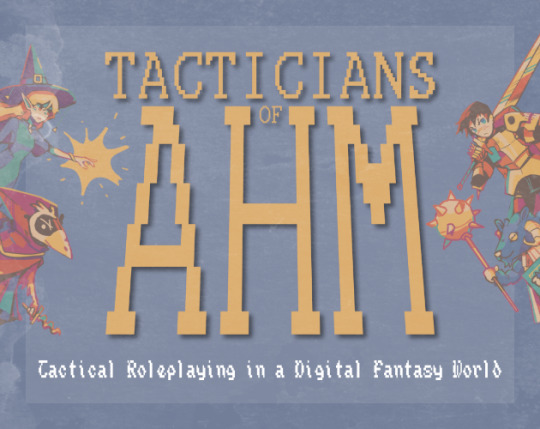
For the last year or so, I've been designing and playtesting Tacticians of Ahm, a game inspired by tactical combat roleplaying designs meant to keep classic grid-n-minis TTRPG combat but to reinvent it in a way that keeps it fast and exciting without slowing your entire session down to a crawl!
Pick up the rulebook and get all future updates for free HERE!
Tacticians of Ahm is a tactical combat-focused tabletop roleplaying game in the corrupt3d fantasy world of Ahm. A bit-rotten blight has appeared in the Northern Sea and from it flows the Corrupt1on, fractured light and shattered shapes sowing chaos across the realm. As Tacticians, you alone are prepared to face the darkness spreading across the lands and reunite the scattered peoples of Ahm.
Unique Elements of Tacticians of Ahm:
Always-hit, set-damage grid-based combat!
Class-specific attack patterns, abilities, and more!
Easy-to-use weapon and ability diagrams!
Rules light out-of-combat play using a single d20!
A digital fantasy world corrupting with age!
You know it's a video game, but your characters don't!
If videos are more your speed, check out this intro to the game:
youtube
Inspired by video games like Into the Breach, Final Fantasy Tactics and Fire Emblem, Tacticians of Ahm was created out of a desire to maintain the rewarding tactical choices and big dramatic moments of traditional grid-n-minis TTRPG combat without slowing the pace of play by removing as many of the frustrating aspects of play as possible and streamlining the rest. Combat is fast and furious! You can always easily read your abilities, know the damage you will do (and when you can do it), and more.
Check the Itch page for more info and pick up the game!
#indie ttrpgs#ttrpg#indie ttrpg#ttrpgs#rpg#fantasy#tactics#into the breach#fire emblem#final fantasy tactics#dnd#dungeons and dragons#Youtube
201 notes
·
View notes
Text

(just realized I neglected to post this shitpost of an ad to tumblr, which is a crime in of itself)
We're making a game about gay robots punching each other! We just hit the final stretch goal at $150k! We only have 48 hours left and my brain is kind of broken but it'll all calm down soon! Come help us make an anti-colonial climate and border justice mecha game! Hi!
1K notes
·
View notes
Photo


Time to announce our next project!
ARC SEED is a turn-based tactics roguelite game with Mechs!
You can already wishlist it on Steam:
https://store.steampowered.com/app/2332970/ARC_SEED/
616 notes
·
View notes
Text
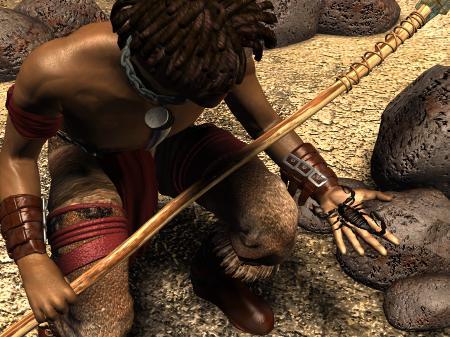
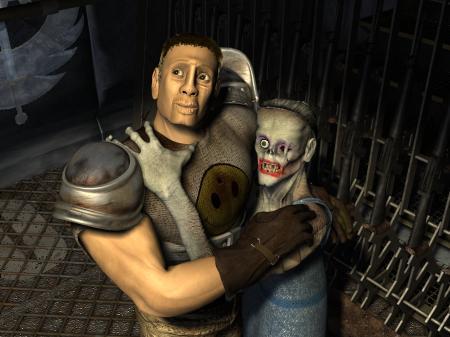



lost Fallout Tactics concept renders i found on a wayback fansite
182 notes
·
View notes
Text

Art by the refulgent @lntpblk!
Anitu is the word for ritual worship across the Sword Isles. Sometimes, it also refers to the gods, souls, and ancestors worshipped to: Anito, Hanitu, hantu. They all arrive from a shared culture in the distant past when even gods were not born.
GUBAT BANWA is a martial arts fantasy tactics RPG set in the refulgent lands of THE SWORD ISLES, inspired by Classical Southeast Asian cultures! We're coming to KS on the 27th!
Anitu lore below the cut!
Anitu is less of an organized religion and more of a catch-all term for most faiths in the Isles, where most of them practice ancestor veneration, sacred worship nature, and ardent ritualism. Each banwa might not even call what they do “anitu” and might refer to it as some other word in their language: in North Rusunuga it is called pagsamba, while in the Eastern Jamiyin Kulisa’s Arrows it is referred to as Qiparjeyuhun, which is just “faith” or belief. For the most part, only those in Gatusan’s mandala of effect recognizes Anitu as a term for a larger belief form.
The most prominent form of Anitu is Kangdayanon Anitu, which is the one practiced in the Gatusan Mahamandala’s center of power, Kangdaya. This version of Anitu has fully syncretized the Saiwa branch of Ashinin Religion, which brought the idea of a fully fledged pantheon and the idea of cosmic forces of gods in this realm. One important syncretism is the adoption of some ancestors turned into Gods, who are performed rituals to. One such god is Apung Makangayaw, the Dragon of Raiding, worshipped as a distant ancestor of Amihan, who became Rani Amiyah, the queen that Shri Bishaya married into to stake his claim into the island of Tauhaw. The gods Jamiyun Kulisa and Indira Suga also arrive from Saiwa Ashinin.
Another important syncretism is the understanding of a cosmic soul, or a supreme oversoul. This is meant to be Siwa, but that name was quickly indigenized and understood to be Laon, the Ancient One, the name of the tallest mountain that can be seen from Tauhaw, Kanglaon. Laon means old, aged, ancient. It is said that Laon is THE Ancestor, from where all things arise.
Another important aspect brought in by Saiwa is the construction of grand temples meant to emulate the stories of the gods both celestial and chthonic. By creating these they believe they are bringing in Favor and Merit, making their lives more fortunate and enriching them with good omens. An important belief, when in the Sword Isles, as every city is subject to the sacred whims of the souls of the world—hurricanes, typhoons, tsunamis, earthquakes, droughts, thunderstorms.
The word in Kangdayanon Anitu for temple is MAGDANTANG, and smaller versions of these temples are known as lantangan. Natural sites are worshipped and offered to as if they were magdantang. This is why every lake, mountain, hill, giant tree, river and every important shore and beach have lantangan for offerings. Stone structures are rare and only appear in the larger cities of Gatusan—they carved onto the side of hills and mountains, or from the rocks of said mountains after performing rituals to ask permission from the mountain gods to take stones for creating merit. The largest stone temple is in Kangdaya, which also acts as the Palace of the Ponong Raja. Other important sites are the Pagodas of Put’wan, the Holy Mountain of Kihadi-an, and the grand (yet now lost) temple city of Biringan, crafted by an ancient Samrasat Devaraja in the island of Mairete, now lost in its jungles.
Kihadi-an is a grand monument complex constructed to mirror the mountain of Semedu, the grandest peak in all of Gubat Banwa. This name in Kangdayanon, Put’wanon, Ba-enense, and Apunon Anitu is attributed to be one of the regnal titles of APU DAYAWA, the grand mountain that juts out from the island of Kalanawan.
Finally, Anitu now recognizes Ashinin-style regnal titles and even the concept of god-kings, as brought by Shri-Bishaya’s retinue and royal court. Ponong Raja Batara Ambas now has a claim to a divine right to rule by way of being an avatar or an embodiment of Laon on the Warring Realms. Titles such as datu are considered a step below the title of Raja, and Maharaja. Ponong Raja means head Raja, and is a coveted title amongst all. According to the Kangdaynon balyan, the gods in the sky speak of the Uniter of the Hundred Hundred Islands, which they call the Langidagandraja, a fusion of the words LANGIT + DAGAT + INDRA + RAJA. Together, this name means HEAVEN-SEA GOD KING, as the conquerer of the entire sky and sea. This name is fabled and no man has a claim to this title. It cannot be gifted by the gods nor can it be achieved through enlightenment. It must be seized from hearts and minds of people.
#gubat banwa#gamedev#ttrpg#tactics#southeast asia#filipino#fantasy#rpg#dnd#writing#game design#lore#fiction
159 notes
·
View notes
Note
What was Napoleon's favorite battle tactic?
There are many encyclopedic analyses of this very question, but all those thousands of pages distill down to one thing- He had his people shoot the other people until he won. The only time he lost, it was because his people didn't shoot the other people enough. Thus, the only important factor of strategy and tactics is to shoot the other people until you win.
Clausewitz and Liddell Hart can suck it.
180 notes
·
View notes
Text
If you feel shame, fear or hesitance for displaying or learning about seductive behavior, you are not ready yet. Seduction is not a game for nice or moralistic people. Seduction is for people who have become one with their shadow selves and know how to wield their true power.
Seduction isn't evil..It's the higher way of life - S.S.
#succulentsiren#dark feminine energy#seduction#patreon#writers and poets#divine feminine#dark energy#darkness#witch#witchcraft#craft#dark femininity#siren#goddess#magic#the art of seduction#tactics#intelligence#seduction series#affirmations#femininity#it girl#morals#morality#beliefs
69 notes
·
View notes
Text
One of the classic criticisms of the British army in WW1 and at the Somme in particular is the way they just marched soldiers in lines towards the German trenches. There is some truth to that, and some formations did do something like that. The attack of the 7th Division on 14 July was pretty straightforward along those lines.
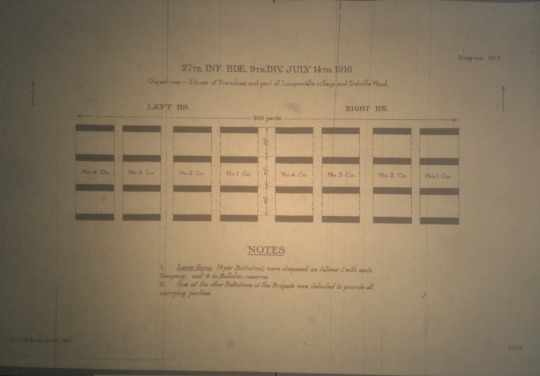
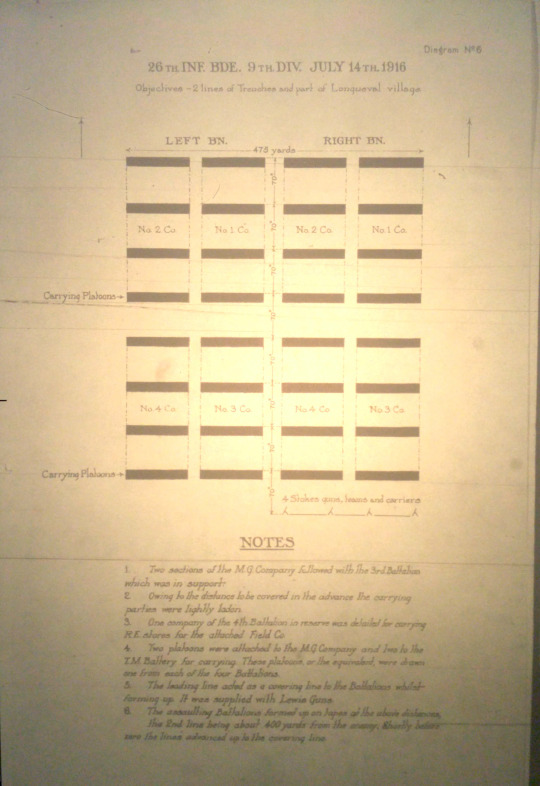
But while there are some basic similarities due to the practical realities of trench warfare, there was a hell of a lot diversity in the formations used throughout the battle.
Some comparisons for the opening of the battle on 1st July 1916. Here you've got a brigade each from the 30th and 18th Divisions in the same battle and over a similar frontage, 700ish yards but using different numbers of battalions, different formations of platoons and companies and a difference in depth.
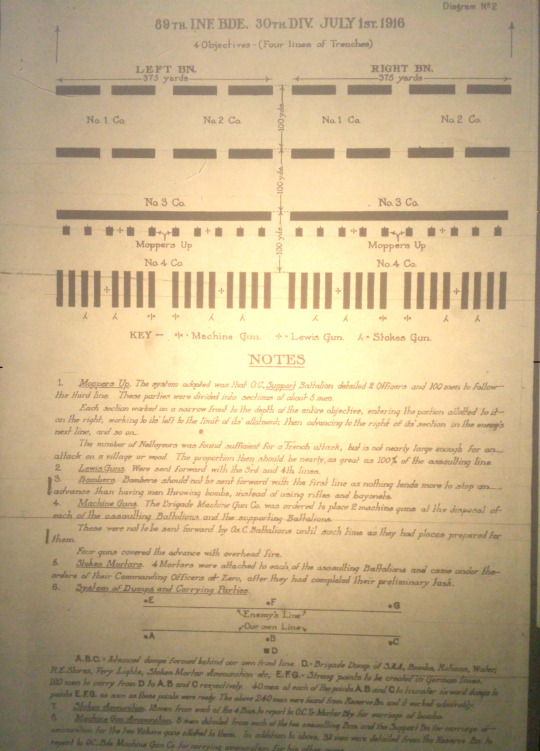

Again, two different divisions attacking in the same battle, this time on July 14th, adopted completely different formations for the attack. Their objectives and frontages were similar, but the methods were again quite different in formation and depth.
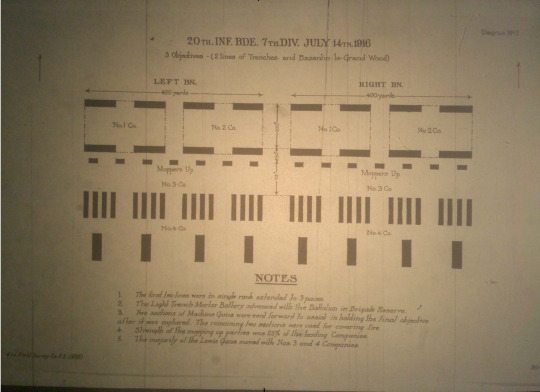
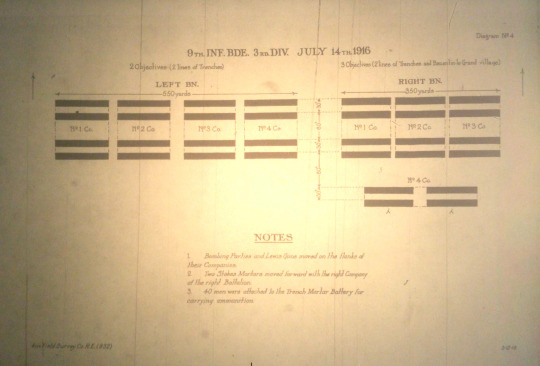
It's a bit cliche amongst WW1 historians that the generals weren't all incompetent dullards, but it's still pretty much the default view in the public imagination and I don't think recent WW1 films have done much to dispel that (not that they're aiming to anyway).
But even a cursory look tells you that most of these guys were professional soldiers who took some level of pride in their work and tried to come to grips with the realities of the war. They didn't always succeed, but most were open to trying new ideas and ways of doing things that wouldn't only be successful, but also reduced the number of their own dead.
80 notes
·
View notes
Text
Doomer Boomer, take a hike.
Saw a post about gen Z Marxists, communists, socialists, and anti-capitalists from a disgruntled boomer. This person had lived through the hippie commune to yuppie pipeline. According to their own account, they abandoned their worldly possessions and joined communes, read Das Kapital by gaslamp, and still ended up as yuppies (young urban professionals; corpos). Below is a rebuttle.
Their criticism was that because gen Z wasn't also giving up their worldly possessions, joining communes(, etc) that gen Z is doing it wrong; they don't believe in the cause, they aren't truly detaching themselves from capitalism, etcetera, etcetera. It was essentially repeating the old lie that as you get older you grow more conservative. It was the "you can't buy a house because you're always buying those lattes and eating avocado toast" of anti-Communism.
What this take of a century misses out on is, honestly, a lot. If this person was truly a scientific socialist, a Marxist, an understander of the dialectical materialist method, then they would understand that what they were doing was conducting an experiment. They were experimenting with a method of organisation and resistance. From history and from what this person said, their experiment failed. Since their experiment failed, and failed miserably, why would we do exactly as they did again? It would take more research than I can be bothered with to confirm this for sure but - as far as my knowledge of hippie commune movements goes - the idea was poorly conceived in the first place. It was unlikely to yield revolutionary results. So I ask again, why would we heed this call to repeat things as they did again?
Additionally, if this person understands the theory they claims to have read - by gaslamp none the less! /sarc - then they should know the importance of material conditions - both for analysis and tactics. If they do understand this much - though their take gives me doubt - then they should understand that the conditions of the mid 20th Century are massively different to those of the early 21st. To list a few changes: the fall of the USSR; the deindustrialisation and the crushing of the unions; the rise of neoliberalism and bourgeoise class consciousness; the internet came into being and prominence; the arrival of new tech-industrial barons (Musk, Bezos, Zuckerberg, Gates, etc.); the introduction of gig work; and more. This means a different analysis and different tactics. If hippie tactics did not work back then, would they work now? No, I doubt it; the hippies described in the post turned to individual liberation which I think is built into the movement because it isolates you from the people. You become the fringe instead of moving among the masses.
Overall, the call to flock to communes like the hippies should be met with scepticism if not derision. It is basically the same stupid argument about being against capitalism whilst also participating in it, repeated so often that it has become a joke:

Credit: @mattbors
#anti capitalism#late stage capitalism#capitalism#socialism#communism#communist#marxism#marxism leninism#marxist leninist#karl marx#hippie#yuppie#yuppie psycho#politics#tactics#leftism#anticapitalism#hippies
84 notes
·
View notes
Text


Pikmin Tactics: Groovy waterspout
#art#artists on tumblr#creative#digitalarts#3d#3dart#3dmodel#3dmodeling#b3d#blender#pikmin4#pikmin#nintendo#tactics
55 notes
·
View notes

